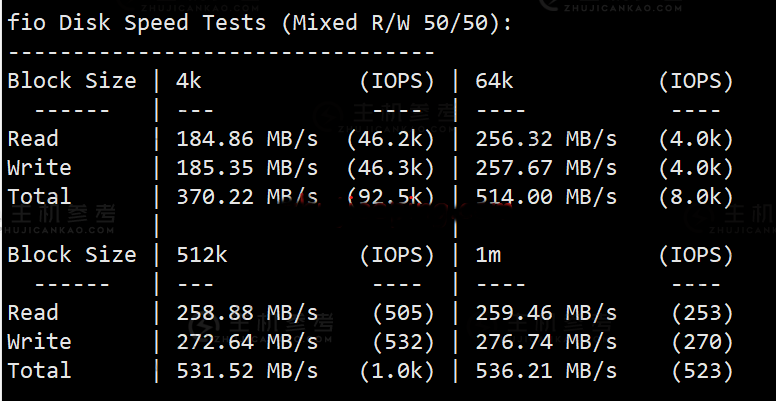configuredxp系统安装图解
WindowsXPDeploymentGuideForVMwareViewWHITEPAPERWHITEPAPER/2VMwareViewtransformsthewaycustomersuseandmanagedesktopoperatingsystems.
Desktopinstancescanbedeployedrapidlyinsecuredatacenterstofacilitatehighavailabilityanddisasterrecovery,protecttheintegrityofenterpriseinformation,andremovedatafromlocaldevicesthataresusceptibletotheftorloss.
Isolatingeachdesktopinstanceinitsownvirtualmachineeliminatestypicalapplicationcompatibilityissuesandimprovesusers'personalcomputingenvironments.
AboutThisGuideThisguidesuggestsbestpracticesforcreatingWindowsXP–basedtemplatesforusewithView5andlater.
CreatingtheInitialVirtualMachineTheinitialvirtualmachineestablishesavirtualhardwareprofileforrapiddeploymentofothervirtualdesktopinstances.
Youcancreatetheinitialvirtualmachinefromscratch,asdescribedinthisguide,orconvertaphysicalmachinetoavirtualmachine,usingeitherthestandaloneversionofVMwarevCenterConverterortheversionintegratedwithVMwarevCenter.
VMwareConverterimagesthetargetPCandmigratesitintoVMwarevSphere.
Whenthemigrationiscomplete,youcanconvertthevirtualmachinetoatemplateandthenuseitasthebasisfordeployingfuturevirtualdesktops.
Tocreatetheinitialvirtualmachinefromscratch,followthesesteps:1.
UsethevSphereClienttoconnecttoyourvCenterserver.
2.
Usetheconsoletoconfiguretheinitialvirtualmachineortemplate.
3.
InstalltheOSusingtheconsole.
WhenyouestablishaconnectionwithyourvSpheredatacenter,createanewvirtualmachinefrominventory.
Whenyoucreateavirtualmachine,theNewVirtualMachinewizardappears.
UsethecustomconfigurationparametersinTable1asbaselinesettingsforthetemplate.
IfyouuseView5.
xasyourvirtualdesktopmanagerfordeployingpooledvirtualdesktops,youcanchangethesesettingsatdeploymenttime.
Table1.
CustomConfigurationParametersParameterCommentsNameandLocationThiscanbeagenericname,suchasxptemplate.
Thelocationcanbeanyfolderwithinyourdatacenterinventory.
Host/ClusterTheVMwareESX/VMwareESXiserverorclusterofserverresourcesthatwillrunthisvirtualmachine.
Itcanbechangedatanytime.
Thislocationdoesnotnecessarilyspecifythelocationoffuturevirtualmachinescreatedfromthistemplate.
ResourcePoolIfthephysicalESX/ESXiserverresourcesaredividedgranularlyusingresourcepools,theycanbeassignedtothisvirtualmachine.
DatastoreThelocationwhereyouwanttostorethefilesassociatedwiththevirtualmachine.
GuestOperatingSystemTheoperatingsystemthatwillbeinstalled.
CPUsThenumberofvirtualprocessorsthatwillbepresentedtothevirtualmachine.
FormostViewusers,asingleprocessorissufficient.
WHITEPAPER/3ParameterCommentsMemoryTheamountofmemorytoallocatetoeachvirtualmachinecreatedfromthistemplate(inmostcases,512MB,forWindowsXP).
NetworkThenumberofvirtualnetworkadaptersthatwillbeused.
Oneisusuallyenough.
Asabestpractice,makethenetworknameconsistentacrossvSphere.
Anincorrectnetworknameinatemplatecancausefailuresduringtheinstancecustomizationphases.
I/OAdaptersTheLSILogicadapterissuedfordeploymentsbasedonViewisrecommended;however,theLSILogicdriverisnotincludedaspartoftheWindowsXPinstallationprocedure.
DownloadandadditduringtheOSinstallation.
DiskCreatesanewdiskwhenyoucreatetheinitialvirtualmachineortemplate.
Specifytheamountoflocalstoragetoallocatetoeachuser.
AllowatleastenoughfortheOSinstallation,patches,andlocallyinstalledapplications.
Abestpracticeistostoreasmuchoftheuser'sinformation,profile,anddocumentsonnetworksharesaspossible,ratherthanlocally.
Doingsocangreatlyreducetheneedfordiskspaceandmanagementoflocaldata.
InstallingWindowsXPVirtualmachinesbehavelikephysicalmachines,soWindowsXPinstallationisessentiallythesameonboth.
Althoughitispossibletoimageyourvirtualmachineusingsometypeofcloningtechnology,thisguidefocusesonafreshWindowsXPinstallation.
PreparationLSIstoragecontrollerdriversarenotavailableontheWindowsXPinstallationCD,sobesuretocompletethefollowingtasksbeforestartingtheinstallation:1.
DownloadtheLSI53C1030driversfromtheLSIWebsite.
2.
UsingMagicISOorotherthird-partysolutions,createan.
flpimagecontainingtheLSILogicdrivers.
3.
UseSCPtotransferthefloppyimagetothevirtualmachine'sESX/ESXihost.
IfyouareusingvCenter,youcanusethevSphereClienttouploadthefiletothedatastore.
4.
BesureyouhaveaWindowsXPCDorISOimagethatisaccessiblefromthevirtualmachine.
PreinstallationModificationstotheVirtualMachineMakethefollowingmodificationstothevirtualmachinehardwareprofilebeforestartingtheWindowsXPinstallation:1.
UsingthevSphereClient,connecttovCenter.
2.
Locatethevirtualmachineyoucreatedearlier.
3.
Editthefollowinghardwaresettings:a.
Ensurethatthereisafloppydrivepresent.
b.
Configurethefloppydrivetoconnectatpoweron.
c.
Ifusingafloppyimage,ensurethatthedevicetypeissettouseafloppyimageandispointingtotheLSIDriverimage.
d.
CheckthattheCD/DVDdriveispresentandconfiguredtoconnectatpoweron.
e.
ConfiguretheCD/DVDdevicetypetopointtotheWindowsXPCDorISOimage.
WHITEPAPER/4InstallationAfteryoucompletethepreinstallationpreparationandmodifications,youcaninstallWindowsXP:1.
FromthevSphereClient,connecttovCenter.
2.
Poweronthevirtualmachinecreatedearlier.
3.
Usetheconsoletoviewthebootprocessandtosendinputtothevirtualmachine.
4.
AstheWindowssetupprocessbegins,pressF6toaddanotherSCSIdriver.
ThisletsyouspecifytheLSILogicdriveronthefloppyimage.
TheWindowssetupprocesscopiesallthenecessaryfilestothevirtualdisk.
CompletethesetupjustasyouwouldforanynormalWindowsXPinstallation.
Becausethisimagewillbeusedasatemplate,however,itisagoodideatomaketheconfigurationasgenericaspossible.
(Forinformationoncustomization,seeCreatingaGuestCustomization.
)AftercompletingtheWindowssetup,performthefollowingtasksbeforeyoufinalizetheimage.
Someofthesestepswillvaryfromorganizationtoorganization,dependingonyourWindowsimagingstandards;someareoptional.
Manycanbemanagedusingagrouppolicy(seeManagingVirtualDesktopsUsingCommonGPOs).
RecommendedSteps1.
IfSP2hasnotbeenappliedtotheinstallationCD,installSP2andthemostrecentMicrosoftupdates.
2.
InstallandconfiguretheVMwareTools.
3.
InstallViewAgent.
4.
Installandconfigureanyadditionalthird-partyorin-houseapplicationsneeded.
5.
SettheWindowsscreensaverto"blank.
"6.
ConfigurethedefaultcolorsettingfortheWindowsRemoteDesktopClientConnection.
Bydefault,WindowsXPuses16-bitcolorforRemoteDesktop.
Youcanenableandmanage24-bitcolorcentrallybyusingagrouppolicyorbymakingthefollowingregistrychange:HKEY_LOCAL_MACHINE\SYSTEM\CurrentControlSet\Control\TerminalServer\WinStations\RDP-TcpChangethecolordepthto4.
OptionalSteps1.
Disableanyunusedhardware,suchasCOM1andCOM2.
2.
Turnoffthemeenhancements.
3.
AdjustMyComputer>Properties>Advancedtab>Performancesection>Settingsforbestperformance.
4.
SettheblankscreensavertoPasswordprotectonresume.
5.
Ensurethathardwareaccelerationisenabled.
Start>ControlPanel>Display>Settingstab>Advancedbutton>Troubleshootingtab6.
DeleteanyhiddenupdateuninstallfoldersintheC:\Windowsdirectory.
Forexample:$NtUninstallKB893756$7.
DisableIndexingServices:Start>ControlPanel>AddRemoveWindowsComponents>IndexingServiceNote:Indexingimprovessearchesbycatalogingfiles.
Foruserswhosearchalot,indexingmaybebeneficialandshouldnotbedisabled.
8.
DisableindexingoftheC:driveinProperties.
9.
RemoveorminimizeSystemRestorepoints:Start>ControlPanel>System>SystemRestore10.
Disableanyunwantedservices.
11.
RunDiskCleanup:MyComputer>C:driveinproperties12.
RunDiskDefrag:MyComputer>C:properties>ToolsAfterthepreparationsandinstallationarecomplete,youcanpoweroffthevirtualmachineandgetreadytoenableitasadeploymenttemplateforothervirtualdesktops.
WHITEPAPER/5ConvertingaVirtualMachinetoaTemplateTemplatesstandardizethecreationofvirtualdesktopsandreducetheriskofhumanerror.
Manyorganizationsuseseparatetemplatesfordifferenttypesofusersorworkgroups,suchasFinance,HR,andSales,whereeachgrouptypicallyusesauniquesoftwareorvirtualhardwareconfiguration.
Templateshelpyouautomateandmanagedesktopprovisioning.
Anyvirtualmachinecanbeconvertedtoatemplate:justconnecttovCenterusingthevSphereClient,locatethevirtualmachineintheinventory,andselectConverttoTemplate.
Anyvirtualmachinecanalsobeclonedtoatemplate.
Cloningcreatesacopyofthevirtualmachine,leavingtheoriginalinplace.
Cloningishelpfulifyouupdatethetemplateandredeploydesktopsoften—forinstance,ifyoudeploynonpersistentdesktopsorifyouuseaprofilesolutiontoseparatetheuserprofilesfromthedesktopenvironment.
Cloningenablesyoutoconvertatemplatetoavirtualmachine,updateit,andthenconvertitbacktoatemplateatanytime.
CreatingaGuestCustomizationGuestcustomizationenablesyoutocustomizevirtualdesktopsastheyarecreated.
UsingMicrosoftSysprep,vCenterguestcustomizationautomatesconfigurationtaskssuchasthefollowing:AddingregistrationinformationAssigningauniquecomputernameAddingyourproductkeySettingtheadministratorpasswordSettingthetimezoneAddinganycustomrun-oncescriptsDefiningthenetworkconfigurationJoiningadomainGeneratinganewSIDVMwareViewworkswithanyexistingpredefinedguestcustomizationspecification.
Youcanselectwhichguestcustomizationfiletouse,ifany,tocustomizethepoolofvirtualdesktops.
Tocreateaguestcustomizationspecification,followthesesteps:1.
ConnectwithvCenterusingthevSphereClient.
2.
SelectEdit>CustomizationSpecifications.
3.
WhentheCustomizationSpecificationManagerstarts,selectNew.
Ifyouprefer,youcanimportanexistingcustomsysprep.
inifileanduseitintheGuestCustomizationwizard.
AsabestpracticewhenusingViewandaguestcustomizationspecification,settheComputerNameportionoftheguestspecificationtoUsetheVirtualMachineName.
ThisensuresthatthecomputernameisconsistentacrossView,vCenter,ActiveDirectory,andLocalComputerName.
Whenyourinitialvirtualmachine,template,andguestcustomizationarecomplete,thevirtualdesktoptemplateisready,andyoucanuseitwhendeployingvirtualdesktops.
ManagingWindowsXPViewDesktopsThefollowingsectionsfocusonbestpracticesforsimplifyingandstandardizingsomecommondesktopmanagementtasks.
AddingUserstotheLocalRemoteDesktopUsersGroupYouneedtoadduserstotheWindowsXPlocalgroupRemoteDesktopUsers,sothattheywillbeabletoaccessindividualorpooleddesktops.
ThereareseveralwaystoaddusersorgroupstothelocalRemoteDesktopUsersgroup.
Oneapproachistousealoginscript.
AnotherapproachleveragestheRestrictedGroupsGPOinActiveDirectory.
WHITEPAPER/6WhenleveragingRestrictedGroups,youcanaddusersindividually,oryoucancreateagroup,adduserstoit,andthenaddthatgrouptotheRestrictedGroupyouaremanaging.
HerearethestepsforconfiguringaRestrictedGroupusingtheDefaultDomainPolicy:1.
UsingyourMicrosoftManagementConsole(MMC)withtheGroupPolicyconsoleforyourdomain,createanewgroupcalledViewUsersunderActiveDirectory>UsersandComputers.
2.
Adduserstothisgroupwhoneedtoaccessthevirtualdesktops.
3.
EdityourDefaultDomainPolicy.
4.
UnderComputerConfiguration>WindowsSettings>RestrictedGroups,addtheRemoteDesktopUsersGroup.
5.
AddtheViewUsersgrouptotheRestrictedRemoteDesktopUsersgroup.
ThisapproachensuresthattheViewUsersgroupisalwaysaddedtothelocalRemoteDesktopUsersgroupofeachvirtualdesktopjoinedtothedomain.
Whenprovisioningnewusers,anadministratororhelpdesktechnicianmustonlyensurethatusersareaddedtotheViewUsersgroupinActiveDirectory.
ManagingVirtualDesktopsUsingCommonGPOsThereareseveralGroupPolicyobjects(GPOs)thatcanbeusedforcentralcontroloftheconfigurationofyourvirtualdesktops.
BecauseusersaccesstheirvirtualdesktopswithRemoteDesktop,themostcommonlyusedGPOsaretheTerminalServerGPOsunderComputerorUserConfiguration>AdministrativeTemplates>WindowsComponents>TerminalServices.
SeveraloftheGPOsarespecifictoTerminalServeranddonotapplytoRemoteDesktopsessions.
SomeofthecommonlyusedGPOsfordeployingWindowsXPinaViewenvironmentaredescribedinTable2andTable3.
ManyoftheseGPOsareoptionalbutrecommended.
Naturally,usecasesandenvironmentsvarydependingonyourorganization'sstandardsandpolicies.
Table2.
GPOsUnderTerminalServicesSERVICEDESCRIPTIONEnforceremovalofRemoteDesktopwallpaper=EnableThissettingcangreatlyenhancetheuserexperience,especiallyoverlow-bandwidthconnections.
Limitmaximumcolordepth=EnableThissettingletsyousetthecolordepthforRemoteDesktopsessions.
AllowuserstoconnectremotelyusingTerminalServices=EnableThissettingensuresthatthelocalpolicyenablingRemoteDesktopconnectionsisconfigured.
RemoteWindowssecurityitemfromStartMenu=DisableTheDisablesettingensuresthatusershavealogoutmechanism.
RemoveDisconnectoptionfromShutdowndialog=EnableThissettingminimizesthepossibilityofusersdisconnectingratherthanloggingout.
I/OadaptersTheLSILogicadapterissuedfordeploymentsbasedonViewisrecommended;however,theLSILogicdriverisnotincludedaspartoftheWindowsXPinstallationprocedure.
DownloadandadditduringtheOSinstallation.
WHITEPAPER/7Table3.
GPOsUnderTerminalServices>SessionsSERVICEDESCRIPTIONSettimelimitfordisconnectedsessions=EnableThissettinglogsoutanydisconnectedsessionsthatoccurafterthespecifiedtime.
CombinedwithViewvirtualmachinepowerpolicies,thissettingcanbeusedtocreateadynamicandpowerfulsolutionforsuspendingorpoweringoffdisconnectedvirtualdesktops.
Whenunneededdesktopsaresuspendedorpoweredoff,theresourcesaremadeavailabletootherdesktops.
SetatimelimitforactivebutidleTerminalServicessessions=EnableThissettinglogsoutanyidlesessionsthatoccurafterthespecifiedtime.
CombinedwithViewvirtualmachinepowerpolicies,thissettingcanbeusedtocreateadynamicandpowerfulsolutionforsuspendingorpoweringoffdisconnectedvirtualdesktops.
Whenunneededdesktopsaresuspendedorpoweredoff,theresourcesaremadeavailabletootherdesktops.
Note:AWindowsXPbugmaypreventtheidletrackerfromworking.
AhotfixisavailablefromMicrosoftuponrequest.
SeeKB890864.
ManagingtheViewClientUsingGPOsOneofthecomponentsprovidedwithVMwareViewistheViewClient,anapplicationthatisinstalledontheclientandwhichprovidestheclient-sidecomponentforconnectingwithvirtualdesktops.
Onsomeclients,theViewClientalsoenablestheabilitytoredirectadditionalUSBdevicesnotsupportedbynativeRDPdeviceredirection.
AlsoincludedwithViewisaGroupPolicyAdministrativeTemplateformanagingandconfiguringViewClientsettingsfromacentrallocationwithGroupPolicy.
Usingthisadministrativetemplate,youcanmanagethefollowingclient-sidesettings:EnabletheshadePintheshadeDon'tcheckmonitoralignmentonspanningColordepthDesktopbackgroundShowcontentsofwindowwhiledraggingMenuandwindowanimationThemesCursorshadowFontsmoothingDesktopcompositionAudioredirectionRedirectdrivesRedirectprintersRedirectserialportsRedirectsmartcardsRedirectclipboardRedirectsupportedplug-and-playdevicesBitmapcachingShadowbitmapsCachepersistenceactiveEnablecompressionWindowskeycombinationredirectionBitmapcachefilesizeWHITEPAPER/8TakethefollowingstepstostartconfiguringtheViewClientsettings:1.
Locatethevdm_client.
admfilein\VMware\VMwareView\Server\extras\GroupPolicyFiles.
ThisfileislocatedonanyViewConnectionServerthathasbeeninstalled.
2.
CopythisfiletothemanagementstationyouusetomanageGPOs.
Bydefault,GroupPolicylooksforadministrationtemplatesinC:\WINDOWS\inf.
Youcancopythevdm_client.
admfiletothatlocationoranyotherlocationaccessiblefromyourmanagementstation.
3.
UsingyourMicrosoftManagementConsole(MMC)withtheGroupPolicyEditorsnap-inloaded,locatethegrouppolicyyouwanttoaddthetemplateto.
4.
Fromthepolicy,expandUserConfiguration,selectAdministrativeTemplates,andselectAdd/RemoveTemplates.
5.
Locatethevdm_clienttemplateandaddittothepolicy.
Whenyoucompletethesesteps,youarereadytoconfigureyourpolicytomanageViewClientsettings.
WhenmanagingtheViewClientsettingsforanotherdevice,suchasathinclientusingitsownRDPclientandconfiguration,anyGPOsettingsforRemoteDesktopwilloverridetheclientside.
Forexample,iftheclientisconfiguredtouse24-bitcolorandtheRemoteDesktopGPOisconfiguredforamaximumof16-bitcolor,theconnectionwillconnectusing16-bitcolor.
SupportingMultipleMonitorsIfyouusetheMicrosoftRemoteDesktopclientcommand-lineoption/span,aRemoteDesktopsessioncanspanmultipledisplayswithamaximumresolutionof4096x2048.
However,spanningdoesnotcreateadesktopexperienceidenticaltothatofaworkstationwithamultiportgraphicscard.
Toachieveatruemultimonitorexperience,youneedathird-partytool,suchasSplitVieworiShadowDesktop.
VMwareViewalsoenablesuserstoconfiguretheirdesktopsbyspanningtheRemoteDesktopsessionacrossmultiplemonitors.
IndividualuserscanconfigurethispreferencewiththeViewClientorViewWebAccess.
AbouttheAuthorWarrenPonder,DirectorofProductManagement,EnterpriseDesktop,EndUserComputing,VMware,wrotethispaperwhileintheroleofSeniorTechnicalMarketingEngineer.
ReleaseNotesTinadeBenedictis,TechnicalMarketingManager,EnterpriseDesktop,EndUserComputing,VMware,mademinorupdatestothispaper.
ThepaperdoesnotfullyreflectthecurrentcapabilitiesofViewwithPCoIP.
Referenceshttp://technet.
microsoft.
com/en-us/sysinternals/default.
aspxhttp://technet.
microsoft.
com/en-us/windowsxp/default.
aspxwt.
svl=leftnavhttp://technet2.
microsoft.
com/windowsserver/en/library/b9546edf-751f-4a09-835a-f3397caef2361033.
mspxmfr=truehttp://technet2.
microsoft.
com/windowsserver2008/en/library/fc0b405b-07ef-4767-8716-198d7f0949011033.
- configuredxp系统安装图解相关文档
- 更新驱动程序软件
- 连接xp系统安装图解
- Stevenxp系统安装图解
- 您可以xp系统安装图解
- 步骤xp系统安装图解
- 三星xp系统安装图解
火数云 55元/月BGP限时三折,独立服务器及站群限时8折,新乡、安徽、香港、美国
火数云怎么样?火数云主要提供数据中心基础服务、互联网业务解决方案,及专属服务器租用、云服务器、专属服务器托管、带宽租用等产品和服务。火数云提供洛阳、新乡、安徽、香港、美国等地骨干级机房优质资源,包括BGP国际多线网络,CN2点对点直连带宽以及国际顶尖品牌硬件。专注为个人开发者用户,中小型,大型企业用户提供一站式核心网络云端服务部署,促使用户云端部署化简为零,轻松快捷运用云计算!多年云计算领域服务经...

阿里云金秋上云季,云服务器秒杀2C2G5M年付60元起
阿里云(aliyun)在这个月又推出了一个金秋上云季活动,到9月30日前,每天两场秒杀活动,包括轻量应用服务器、云服务器、云数据库、短信包、存储包、CDN流量包等等产品,其中Aliyun轻量云服务器最低60元/年起,还可以99元续费3次!活动针对新用户和没有购买过他们的产品的老用户均可参与,每人限购1件。关于阿里云不用多说了,国内首屈一指的云服务器商家,无论建站还是学习都是相当靠谱的。活动地址:h...

华纳云E5处理器16G内存100Mbps688元/月
近日华纳云商家正式上线了美国服务器产品,这次美国机房上线的产品包括美国云服务器、美国独立服务器、美国高防御服务器以及美国高防云服务器等产品,新产品上线华纳云推出了史上优惠力度最高的特价优惠活动,美国云服务器低至3折,1核心1G内存5Mbps带宽低至24元/月,20G ddos高防御服务器低至688元/月,年付周期再送2个月、两年送4个月、三年送6个月,终身续费同价,有需要的朋友可以关注一下。华纳云...

-
火影忍者644火影644集4分钟左右的背景音乐是什么美女桌面背景图片收1280x800超美女桌面背景地址304和316不锈钢哪个好304不锈钢和316不锈钢哪个好浏览器哪个好什么浏览器最好用?骁龙750g和765g哪个好麒麟970跟骁龙730哪个更好输入法哪个好用输入法那个软件好天气预报哪个好用哪个最准确天气预报的软件哪个比较准免费阅读小说app哪个好求一个看书比较好的APP华为p40和mate30哪个好华为mate30和荣耀3O那个好?朱祁钰和朱祁镇哪个好明英宗和明代宗是怎么回事?